#bauhaus 1919 - 1933
Explore tagged Tumblr posts
Photo

10 notes
·
View notes
Photo

#gerhard marcks#bauhaus#weimar#keramikwerkstatt#dornburg#1919-1925#burg giebichenstein#halle#1925-1933#köln#1950#sculptor#die bremer stadtmusikanten
3 notes
·
View notes
Text
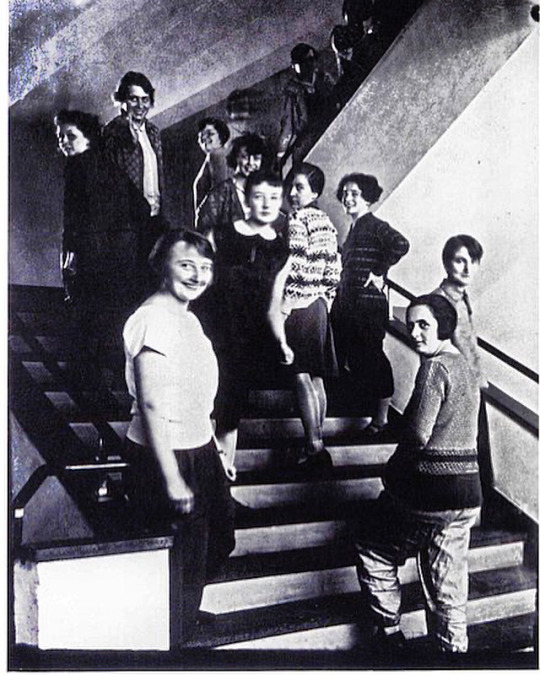
Women of Bauhaus: Weaving class on the Bauhaus stairs, 1927
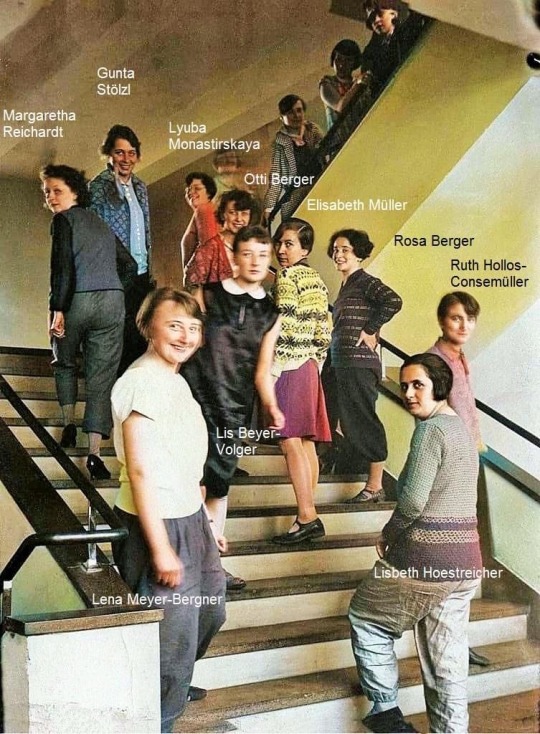
The Bauhaus (1919 - 1933) was seen as a progressive academic institution, as it declared equality between the sexes and accepted both male and female students into its programs. During a time when women were denied admittance to formal art academies, the Bauhaus provided them with an unprecedented level of opportunity for both education and artistic development, though generally only in weaving and other fields considered at the time to be appropriate for women.
Controversies
Although the school was praised for its more progressive approach to gender equality, some criticize the schools reputation, claiming that many of its female members went unnoticed both during and after the school's short existence. Others claim that although the school fronted progressive ideas of gender equality, its administration was rooted in ideals of the past and in misogyny. In the case of Gertrud Arndt, she aspired to study architecture, but was instead redirected into the more domestic or "feminine" subject of weaving, after the administration claimed that there were no available architecture classes for her. Similarly, the school also attempted to redirect Benita Koch-Otte into more domestic subjects, but she persevered with her original studies and became an influential figure in both textile design and art education. However, during her studies, she was often encouraged to give up some of her classes in order to spend more time gardening.Via Wikipedia
Some Key Female Artists & Designers of The Bauhaus:
Anni Albers
Lis Beyer
Marianne Brandt
Katt Both
Alma Siedhoff-Buscher
Ilse Fehling
Marguerite Friedlaender-Wildenhain
Gertrud Grunow
Grete Heymann-Loebenstein
Kitty van der Mijll Dekker
Lucia Moholy
Lilly Reich
Gunta Stölzl
Lou Scheper
Grete Stern ... and many more
See : https://en.m.wikipedia.org/wiki/Women_of_the_Bauhaus for more
#art #design #artHERstory #PalianShow #AnniAlbers #LisBeyer #MarianneFehling
#GertrudGrunow #LuciaMoholy #LillyReich #GuntaStölzl #LouScheper #GreteStern #germanwomenartists #jewishwomen #germanherstory
14 notes
·
View notes
Text
Deutschribing Germany
Landmarks
Germany is the third country in the world with the highest number of World Heritage Sites: fifty-one in total, of which forty-eight are cultural and three are natural.

Aachen Cathedral
The Aachen Cathedral is a Roman Catholic church in Aachen, North Rhine-Westphalia. It is one of the oldest cathedrals in Europe and was consecrated in 805. Emperor Charlemagne was buried there.
The cathedral has two distinct architectural styles and small portions of a third. The core is Carolingian-Romanesque, the choir was constructed in the Gothic style, and the area around the throne is Ottonian.
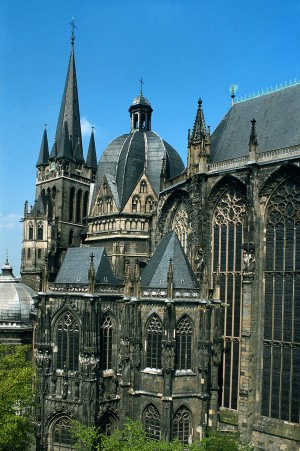
Abbey and Altenmünster of Lorsch
The Lorsch Abbey is a former imperial abbey in Lorsch, Hesse. It was founded in 764 and was one of the most renowned monasteries of the Carolingian Empire. Although in a ruined state nowadays, its remains are among the most important pre-Romanesque-Carolingian style.
The abbey combines the Roman triumphal arch (arch-shaped passageways and half-columns) with the vernacular Teutonic heritage (baseless triangles of the blind arcade and polychromatic masonry).

Ancient and Primeval Beech Forests of the Carpathians and Other Regions of Europe
The Ancient and Primeval Beech Forests of the Carpathians and Other Regions of Europe is a transnational serial nature site that includes forests in Albania, Austria, Belgium, Bulgaria, Croatia, Germany, Italy, Romania, Slovakia, Slovenia, Spain, and Ukraine.
It encompasses 94 forests of European beech, which in many cases have grown without interference since the last ice age. Those in Germany are located in Brandenburg, Hesse, Mecklenburg-Vorpommern, and Thuringia.
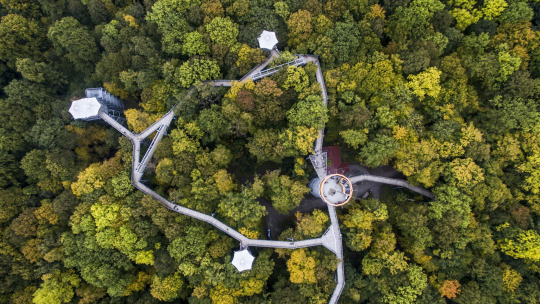
Archaeological Border complex of Hedeby and the Danevirke
Hedeby was an important Danish Viking Age trading settlement between the 8th and 11th centuries, now in Busdorf, Schleswig-Holstein. It was rediscovered in the late 19th century.
The Danevirke or Danework is a system of Danish fortifications in Schleswig-Holstein initiated in 650 and expanded during the Viking Age and High Middle Ages.

Bauhaus and its Sites in Weimar, Dessau and Bernau
Bauhaus and its Sites in Weimar, Thurngia; Dessau-Roßlau, Saxony-Anhalt, and Bernau bei Berlin, Brandenburg, comprises six separate sites associated with the Bauhaus art school, which was in operation between 1919 and 1933.
The buildings are fundamental representatives of Classical Modernism and Art Nouveau. Some of them were built as social housing, others operated as schools, and the rest of them were residential buildings.
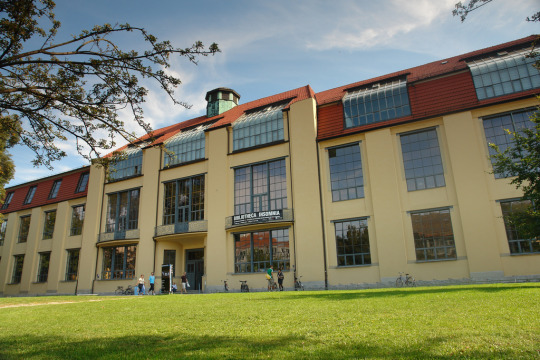
Bergpark Wilhelmshöhe
Bergpark Wilhelmshöhe is a landscape park in Kassel, Hesse. It is the largest European hillside park and the second-largest park on a hill slope in the world. Construction began in 1689 and lasted 150 years.
The park has Baroque buildings and unique fountains and water features. At the summit stands the Hercules monument, a 40-meter-high pyramid with an 8.5 meter bronze statue of Hercules.

Berlin Modernist Housing Estates
The Berlin Modernist Housing Estates site comprises six separate subsidized housing estates in Berlin. It dates from the Weimar Republic (1919-1933).
The estates are examples of the building reform movement that contributed to improving housing and living conditions of people and also provide exceptional examples of new urban and architectural typologies, as well as technical and aesthetic innovations.

Carolingian Westwork and Civitas Corvey
The Princely Abbey of Corvey is a former Benedictine abbey consecrated in 844 and located in Höxter, North Rhine-Westphalia. It was one of the self-ruling princely abbeys of the Holy Roman Empire.
An example of Carolingian architecture, it is the oldest surviving example of a westwork, whose inside contains the only known wall paintings of ancient mythology with Christian interpretation in Carolingian times.

Castles of Augustusburg and Falkenlust at Brühl
The Ausgustusburg and Falkenlust Palaces form a historical building complex in Brühl, North Rhine-Westphalia. The buildings are connected by the spacious gardens of the Schlosspark.
Built in the early 18th century, the palaces and gardens are masterpieces of early Rococo architecture. They are now used as a venue for concerts.

Caves and Ice Age Art in the Swabian Jura
The Caves and Ice Age Art in the Swabian Jura are a collection of six caves in the Swabian Alps, in Baden-Württemberg, which were used by Ice Age humans for shelter about 33,000 to 43,000 years ago.
Within the caves were found the oldest non-stationary works of human art in the form of carved animal and humanoid figurines, in addition to the oldest musical instruments ever found.
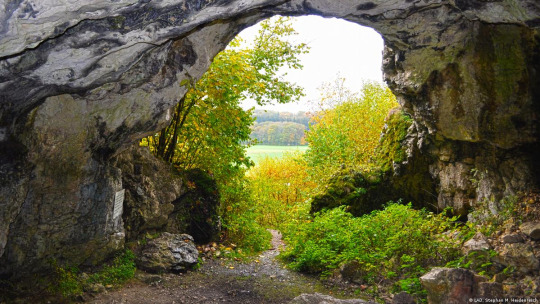
Classical Weimar
Classical Weimar consists of eleven sites in and around Weimar, Thuringia. The city was a cultural center of the Enlightenment during the 18th and 19th centuries, where many notable writers and philosophers, including Christoph Martin Wieland, Friedrich Schiller, John Gottfried Herder, and Johann Wolfgang von Goethe, lived and participated in the Weimar Classicism movement.
It includes the church of St. Peter and Paul, Duchess Anna Amalia Library, Goethe's house, Herders residence, the historical cemetery, Park an der Ilm, Schiller's house, Schloss Belvedere, Schloss Ettersburg, Schloss Weimar, Tiefurt House, Wilhelm-Ernst-Gymnasium, and Wittumspalais.
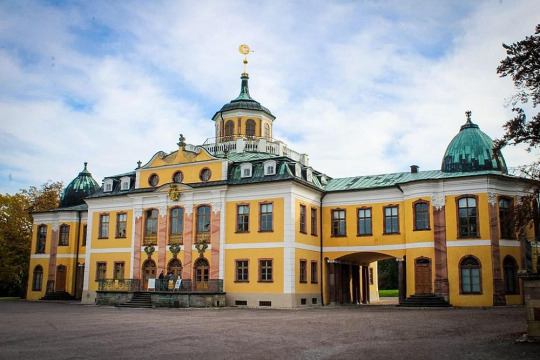
Collegiate Church, Castle, and Old Town of Quedlinburg
Quedlinburg was an influential and prosperous trading center during the early Middles Ages and a center of influence under the Ottonian dynasty.
Quedlinburg Abbey was a house of secular canonesses in Quedlinburg, Saxony-Anhalt. It was founded in 936 on the initiative of Saint Mathilda, the widow of King Henry the Fowler, as his memorial. The castle, abbey, church, and surrounding buildings are masterpieces of Romanesque architecture.

Cologne Cathedral
The Cologne Cathedral is a Catholic cathedral in Cologne, North Rhine-Westphalia. Construction began in 1248 but was halted in 1560; the cathedral was not completed until 1880.
It is a renowned monument of Gothic architecture and the largest Gothic church in Northern Europe, with the second-tallest spires. It is also the third-tallest church in the world.

Darmstadt Artists' Colony Mathildenhöhe
The Darmstadt Artists' Colony refers to a group of Jugendstil artists as well as to the buildings in Mathildenhöhe in Darmstadt, Hesse, where the artists lived in the 19th and 20th centuries.
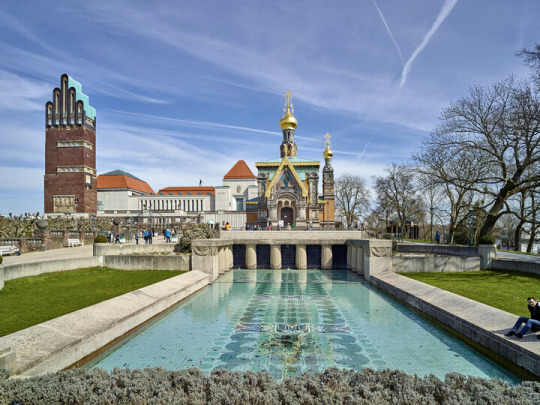
They were financed by patrons and worked together with other members of the group with similar artistic tastes.
Erzgebirge/Krušnohoří Mining Region
The Ore Mountains—Erzgebirge in German and Krušnohoří in Czech—lie along the Czech-German border in Bohemia and Saxony, respectively, and the site is shared between the Czech Republic and Germany.
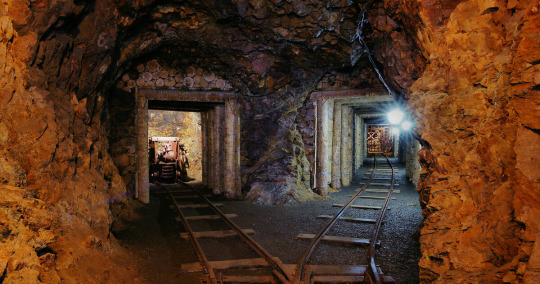
The region was the setting of the earliest stages of the early transformation of mining and metallurgy from a craft to a large-scale industry. As a result, mining directly shaped the landscape and the habitats of plants and animals.
Fagus Factory in Alfeld
The Fagus Factory is a shoe last factory in Alfeld on the Leine, Lower Saxony. It is an important example of early modern architecture.

The factory was commissioned by Carl Benscheidt, who wanted a radical structure that expressed the company's break from the past. It was built between 1911 and 1913.
Frontiers of the Roman Empire
Limes is the term used to refer to the Germanic border defense or delimiting system marking the borders of the Roman Empire and separating the empire from the unsubdued Germanic tribes between the years 83 and 260.
The Limes Germanicus are the fortifications that bounded the ancient Roman provinces of Germania Inferior, Germania Superior, and Raetia, in modern-day southwestern North Rhine-Westphalia and southwestern and southern Germany. Their total length was 568 km, and they included sixty forts and 900 watchtowers.
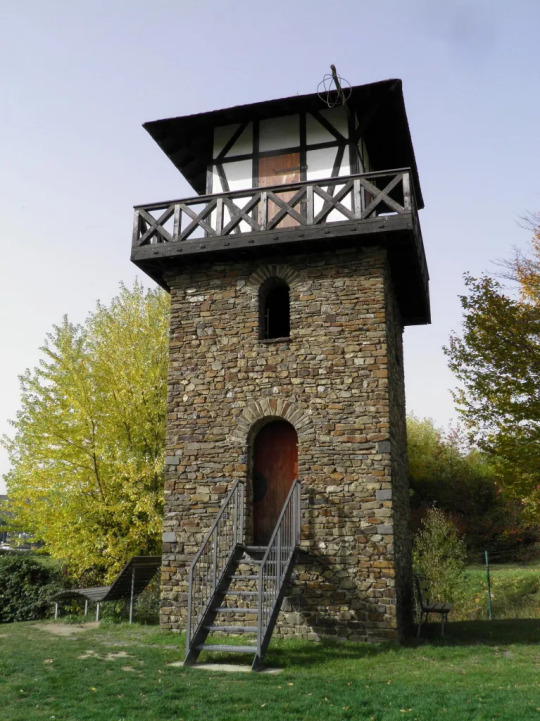
Frontiers of the Roman Empire in Bavaria
The Danubian Limes refers to the Roman military frontier along the Danube in Bavaria, as well as Austria, Bulgaria, Croatia, Hungary, Romania, Serbia, and Slovakia.
The border was reinforced with watchtowers, legion camps, and forts built around the first century. A Roman road, the Danube Way, was laid along the limes.

Garden Kingdom of Dessau-Wörlitz
The Dessau-Wörlitz Garden Realm is a cultural landscape between Dessau and Wörlitz in Saxony-Anhalt. It was created in the late 18th century and is one of the largest English parks in continental Europe.

It was designated as a world heritage site because of its exceptional landscape design and testimony to the ideals of the Enlightenment Age.
Great Spa Towns of Europe
The Great Spa Towns of Europe is a transnational site that includes eleven spa towns across several European countries, namely, Austria, Belgium, Czech Republic, France, Germany, Italy, and the United Kingdom.
Those in Germany are Bad Ems, Rhineland-Palatinate; Baden-Baden, Baden-Württemberg, and Bad Kissingen, Bavaria. All the spa towns were developed around natural mineral water springs.

Hanseatic City of Lübeck
The Hanseatic City of Lübeck, located in Schleswig-Holstein, is the second-largest city on the German Baltic coast. It was founded before 819 by Polabian Slavs and became the cradle and capital city of the Hanseatic League.
Nicknamed the "City of Seven Towers", its historic old town includes five Protestant churches with seven towers: the Lübeck Cathedral, St. Giles's, St. Jacob's, St. Mary's, and St. Peter's, as well as the Burgkloster, the Koberg site, the town hall, and the market square.

Historic Centers of Stralsund and Wismar
The Hanseatic City of Stralsund is located in Mecklenburg-Western Pomerania and is the oldest city in Pomerania. The Strelasund Crossing connects the city with Rügen, the largest island of Germany. Its old town was inscribed as a UNESCO World Heritage Site alongside Wismar because of its Brick Gothic buildings and importance in the Hanseatic League.
The Hanseatic City of Wismar is also located in Mecklenburg-Western Pomerania. Its historical old town includes the churches of St. George's, St. Mary's, and St. Nicholas's.

Luther Memorials in Eisleben and Wittenberg
Eisleben, in Saxony-Anhalt, was the hometown of Martin Luther, and he even preached his last sermon and died there. His Birth and Death houses are a UNESCO World Heritage Site. The town was first mentioned in the late 10th century.
Wittenberg is also famous for its close connection with Luther, as he lived in the Augustinian monastery. It was also one of the most powerful cities in the Holy Roman Empire as the seat of the Elector of Saxony.
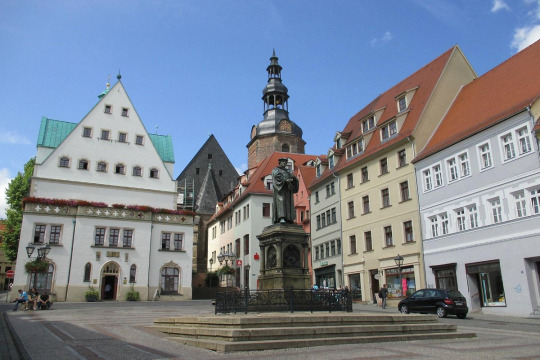
Margravial Opera House Bayreuth
The Margravial Opera House is a Baroque opera house in Bayreuth, Bavaria. It was constructed according to the plans designed by the French architect who built the court of Hohenzollern margrave Frederick of Brandenburg-Bayreuth.
The façade was inspired by the Place Vendôme in Paris and has large Corinthian columns. A balustrade is stretched across the façade, with sculptures of Apollo, Minerva, and six Muses placed atop.

Maulbronn Monastery Complex
The Maulbronn Monastery is a former Cistercian abbey and ecclesiastical state in Maulbronn, Baden-Württemberg.

Founded in 1147, the complex is surrounded by turreted walls and a tower gate. Today it houses the town hall and a police station. The monastery contains an Evangelical seminary and a boarding school.
Messel Pit Fossil Site
The Messel pit is a quarry near Messel, in Hesse. Before it fell into disuse, bituminous shale was mined there. Besides its mineral significance, it also has significant geological and scientific importance due to the abundance of well-preserved fossils and diversity of plants and animals found there.

The site almost became a landfill, but strong local resistance stopped these plans and the site was declared a World Heritage Site. Since then, discoveries about the early evolution of mammals and birds are still being made.
Mines of Rammelsberg, Historic Town of Goslar and Upper Harz Water Management System
The Rammelsberg is a mountain south of Goslar, Lower Saxony, where an important silver, copper, and lead mine is located. Before its closure in 1988, it was the only mine still working continuously for over 1,000 years.
Goslar's political importance for the Holy Roman Empire and its testimony to the history of ore mining contributed to making them a UNESCO World Heritage Site. The Upper Harz Water Regale is a system of dams, reservoirs, and ditches built between the 16th and 19th centuries to store the water that drove the water wheels of the mines, including those in Rammelsberg.

Monastic Island of Reichenau
The Reichenau Island is located in Lake Constance, Baden-Württemberg. It is connected to the mainland by a causeway and a low road bridge.
In 724, the first monastery was built on the island, and Reichenau became an influential religious, cultural, and intellectual center. The Reichenau Abbey was one of the most significant monasteries in the Frankish Empire.

Museum Island, Berlin
The Museum Island in Berlin is a museum complex on the northern part of the Spree Island. It was built between 1830 and 1930 by order of the Prussian kings.
The island consists of the Altes Museum (old museum), Neues Museum (new museum), Alte Nationalgalerie (old national gallery), the Bode-Museum, and the Pergammonmuseum, as well as the Berlin Cathedral.
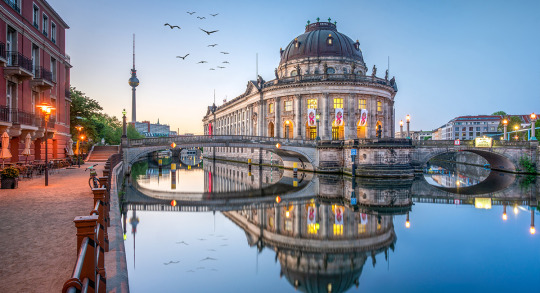
Muskauer Park/Park Mużakowski
The Muskau Park—Muskauer Park in German and Park Mużakowski in Polish—is a landscape park in Upper Lusatia, a region between Germany (Saxony) and Poland.
The site forms the largest English gardens in Central Europe and was laid out from 1815 onward. Its utopian design incorporates both native plants and the nearby town.
Naumburg Cathedral
The Naumburg Cathedral is located in Saxony-Anhalt. It dates from the 13th century and is a renowned landmark of the German Romanesque.
The west choir, the donor portrait statues of the twelve founders, and the rood screen are significant early Gothic monuments.
Old Town of Regensburg with Stadtamhof
Regensburg, in Bavaria, was an imperial Roman river fort and the political, economic, and cultural center of the surrounding region.
Its medieval center was made a World Heritage Site because of its well-preserved architecture, being the biggest medieval city north of the Alps, and historical importance for assemblies during the Holy Roman Empire.
Palaces and Parks of Potsdam and Berlin
The Palaces and Parks of Potsdam and Berlin site is a group of palace complexes and landscaped gardens in the Havelland region around Berlin and Potsdam.
Among others, the site includes the Palace and Park of Sanssouci, Neuer Garten (New Garden), Marmorpalais (Marble Palace), Cecilienhof Palace, Glienicke Palace, Park Glienicke, Nikolskoe log house, Pfaueninsel (Peacock Island), and Jagdschloß Glienicke (Glienicke hunting lodge).
Pilgrimage Church of Wies
The Pilgrimage Church of Wies is an oval Rococo church located in the foothills of the Alps in the town of Steingaden, Bavaria. It was built in the late 1740s by the Zimmermann brothers after a miracle allegedly happened there.
In 1738, tears were seen on a wooden figure of Christ at the Column. This resulted in a pilgrimage rush to see the sculpture, which led to the construction of a small chapel to house the statue. The chapel was soon expanded due to the large number of pilgrims it attracted.
Prehistoric pile dwellings around the Alps
The prehistoric pile dwellings around the Alps are a series of prehistoric stilt houses settlements in the Alps built between 5,000 and 500 BCE on the edges of lakes, rivers, or wetlands.
The UNESCO site includes 111 dwellings in Switzerland (56), Italy (19), Germany (18), France (11), Austria (5), and Slovenia (2). Excavations conducted at some of the sites have yielded important evidence regarding prehistoric life.
Roman Monuments, Cathedral of St. Peter and Church of Our Lady in Trier
The Roman Monuments, Cathedral of St. Peter and Church of Our Lady in Trier, Rhineland-Palatinate, demonstrate the political, economic, and historical importance of Trier in the Roman Empire.
The site includes the Aula Palatina, Barbara Baths, Church of Our Lady, High Cathedral of Saint Peter, Igel Column, Imperial Baths, Moselle Bridge, and Porta Nigra.
ShUM cities of Speyer, Worms and Mainz
The ShUM cities site refers to three Jewish communities in Rhineland-Palatinate: Shpira (Speyer), Warmaisa (Worms), and Magenza (Mainz). They were cultural centers of Jewish scholarship and of great importance for Ashkenazi Judaism.
Speyer contains some of the oldest and best-preserved Jewish buildings in its Jewish courtyard, while Worms has the oldest surviving in situ cemetery in Europe. Unfortunately, the city of Mainz, like many other places around the world, was the site of persecution and massacres against Jewish people.
Speicherstadt and Kontorhaus District
The Speicherstadt ("City of Warehouses") and Kontorhaus District are located in Hamburg. The Speicherstadt, where buildings stand on oak-pile foundations, is the largest warehouse district in the world. An example of Neo-Gothic and modernist architecture, the district was built as a free zone to transfer goods without paying customs.
The Kontorhaus District is the southeastern part of the old town. It is characterized by large office buildings in the style of Brick Expressionism. The area is densely built-up with many narrow alleys.
Speyer Cathedral
The Imperial Cathedral Basilica of the Assumption and St. Stephen is located in Speyer, Rhineland-Palatinate. The cathedral was built in the 11th century and features a triple-aisled vaulted basilica of red sandstone.
It is the largest Romanesque church in the world and is the burial site of several Salian, Hohenstaufen, and Habsburg emperors and kings.
St. Mary's Cathedral and St. Michael's Church at Hildesheim
The Cathedral of the Assumption of Mary is a medieval Roman Catholic cathedral in Hildesheim, Lower Saxony. It was built between 1010 and 1020 in the Romanesque style.
The Church of St. Michael is an early-Romanesque church in Hildesheim. Built in the 11th century, it is now a shared church, the main church being Lutheran and the crypt being Roman Catholic.
The Architectural Work of Le Corbusier, an Outstanding Contribution to the Modern Movement
The Architectural Work of Le Corbusier site consists of seventeen Modernist buildings in three continents by architect Le Corbusier.
The Weissenhof Estate is a housing estate in Stuttgart, Baden-Württemberg, and one of Le Corbusier's designs. It was built for an exhibition to showcase modern architecture's aspiration to provide cheap, simple, efficient, and good-quality housing.
Town Hall and Roland on the Marketplace of Bremen
The Bremen City Hall is one of the most important examples of Brick Gothic and Weser Renaissance architecture in Europe. Built in the 15th century, it is located on the market square.
Directly in front of it is the statue of Roland, which depicts the paladin of the first Holy Roman Emperor Charlemagne and hero of the Battle of Roncevaux Pass. It was erected in 1404 and the oldest surviving example.
Town of Bamberg
Bamberg is a town in Bavaria that dates back to the 9th century. It was a key link with the Slavs, especially those of Pomerania and Poland, and was briefly the center of the Holy Roman Empire.
Its medieval streets and buildings and historical significance were behind its designation as a UNESCO World Heritage Site.
Upper Middle Rhine Valley
The Upper Middle Rhine Valley or Rhine Gorge is a 65 km section of the Rhine between Koblenz and Rüdesheim in Rhineland-Palatinate and Hesse.
The rocks that form the landscape were laid down during the Paleozoic era and are known as Rhenish Facies, a type of fossil-bearing sedimentary rock mainly consisting of slate.
Völklingen Ironworks
The Völklingen Ironworks is a former blast-furnace complex in Völklingen, Saarland. Pig or crude iron production occurred at the site between 1882 and 1986.
It is one of the few intact ironworks surviving in Europe and North America and a testimony to ferrous metallurgy and the Industrial Revolution.
Wadden Sea
The Wadden Sea is an intertidal zone in the southeastern part of the North Sea, which borders Bremen, Hamburg, Lower Saxony, and Schleswig-Holstein.
It lies between northwestern continental Europe and the low-lying Frisian Islands, forming a shallow body of water with tidal flats and wetlands. The site has a high biological diversity and is an important area for breeding and migrating birds.
Wartburg Castle
The Wartburg is a medieval castle in Eisenach, Thuringia. It was the home of St. Elisabeth of Hungary and the place where Martin Luther translated the New Testament.
The castle's structures date from the 12th through 15th centuries, but the interior only goes back to the 19th century. It was an important inspiration for the Neuschwanstein Castle.
Water Management System of Augsburg
The Water Management System of Augsburg is located in the city of Augsburg, Bavaria, which is one of Germany's oldest cities, founded by the Romans.
The city's water management system has unique medieval canals and water towers and is testimony to the development of hydraulic engineering.
Würzburg Residence with the Court Gardens and Residence Square
The Würzburg Residence is a palace in Würzburg, Bavaria, whose interiors are masterworks of Baroque and Rococo architecture and art, including the largest fresco in the world.
Built in the 18th century, the residence includes large gardens in the Baroque and English garden styles.
Zollverein Coal Mine Industrial Complex
The Zollverein Coal Mine Industrial Complex is a former industrial site in Essen, North Rhine-Westphalia. The first mine was founded in 1847 and the last one closed in 1986.
The two parts of the site ranked among the largest of their kinds in Europe and were built in the New Objectivity style.
13 notes
·
View notes
Text
Escuela Bauhaus. “El objetivo de toda actividad creativa es la creación.”
🫡

Fue una escuela de arte, diseño y arquitectura que existió entre 1919 y 1933 en Alemania. Fue fundada por el arquitecto Walter Gropius en la ciudad de Weimar, y luego se trasladó a Dessau y finalmente a Berlín. La Bauhaus es una de las instituciones más influyentes en la historia del diseño moderno y la arquitectura.
La enseñanza en la Bauhaus se basaba en el principio de "aprender haciendo" y estaba centrada en talleres donde los estudiantes trabajaban con materiales y técnicas de producción real. Los cursos incluían diseño de muebles, cerámica, metalurgia, tipografía, pintura, escultura y arquitectura, entre otros. Además, se enfatizaba la importancia de la teoría del color, la forma y la composición.
Se asoció principalmente con el movimiento Moderno, que buscaba romper con las tradiciones históricas y abrazar la funcionalidad, la simplicidad y la estética minimalista en el diseño. Esta corriente de diseño, se caracterizaba por líneas limpias, formas geométricas simples, ausencia de ornamentación superflua y un enfoque en la producción industrial.
Debido a presiones políticas y sociales, la Bauhaus fue cerrada en 1933 por las autoridades nazis, que consideraban sus ideas como "degeneradas" y contrarias al nacionalismo y la tradición alemana.



📷 2 Walter Gropius
📷 3 Paul Klee clase de Teoría del color en la Bauhaus
📷 4 Plan de estudios
3 notes
·
View notes
Text




IMAGENES Y DATOS INTERESANTES DEL DIA 12 DE ABRIL DE 2024
Día Internacional de los Niños de la Calle, Día Internacional de los Vuelos Espaciales Tripulados, Día Internacional de las Personas con Extremidades Diferentes, Año Internacional de los Camélidos.
San Julio I.
Tal día como hoy en el año 1981
Se lanza desde Cabo Cañaveral, en Houston (EE.UU.), la primera nave espacial reutilizable de la historia: el trasbordador Columbia. La misión, con el astronauta John Young como piloto, durará 54 horas. (Hace 43 años)
1961
En la URSS, actual Rusia, y a las 9:07 hora de Moscú, despega de la base de Baikonur a bordo de la cápsula espacial "Vostok I", Yuri Gagarin, de 27 años que se convierte en el primer hombre en orbitar nuestro planeta en un vuelo de 108 minutos de duración cuya órbita le lleva a una distancia entre 180 y 327 kilómetros de la superficie terrestre. (Hace 63 años)
1954
La banda de rock de "Bill Haley and the Comets", que acaban de cambiar de sello discográfico, en su primera sesión para Decca Records, acompañados por Danny Cedrone a la guitarra eléctrica y Billy Gussak a la batería, graban "Rock Around the Clock", el mayor éxito de Haley y una de las canciones más importantes de la historia del rock and roll, a pesar de que inicialmente tendrá un éxito comercial moderado. (Hace 70 años)
1931
Las elecciones municipales en España dan la victoria a los republicanos, lo que traerá el advenimiento de la II República dos días más tarde y la salida del país del rey Alfonso XIII con el fin de evitar una guerra civil. (Hace 93 años)
1919
En Weimar, Alemania, se funda la Staatliche Bauhaus, o simplemente Bauhaus, escuela de arquitectura, diseño, artesanía y arte fundada por el arquitecto socialista Walter Gropius, con la idea de la necesaria reforma de las enseñanzas artísticas como base para una consiguiente transformación de la sociedad burguesa. En 1933 será cerrada por las autoridades prusianas en manos del Partido Nazi. En sus dos décadas, dejará un importante legado a las futuras generaciones arquitectónicas. (Hace 105 años)
1861
El inicio de la guerra civil norteamericana viene marcado por un disparo de cañón y el consiguiente asalto confederado a la guarnición del fuerte Sumter en Charleston (Carolina del Sur) en este fatídico día. (Hace 163 años)
1633
La Inquisición inicia el proceso de herejía contra el astrónomo Galileo Galilei, que concluirá con la condena a prisión perpetua, pese a la renuncia de Galileo a defenderse y a su retractación formal. La pena será suavizada en cierta medida, al permitírsele que la cumpla en su casa de recreo cercana a la villa de Arcetri, en las proximidades del convento donde, en 1616 y con el nombre de sor Maria Celeste, había ingresado su hija más querida, Virginia, que fallecerá al año siguiente creyéndose hereje, al dudar de la inmovilidad de la Tierra. (Hace 391 años)
1609
España reconoce la independencia de los Países Bajos, tras la tregua firmada en Amberes el pasado día 9. (Hace 415 años)
1557
En este lunes de semana santa, sobre las ruinas de Tomebamba localizadas en un paraje estratégico y con abundantes recursos naturales, el explorador y conquistador español Gil Ramírez Dávalos, en compañía de un grupo de españoles, funda una ciudad con el nombre de "Santa Ana de los cuatro ríos de Cuenca" (actual Cuenca, en Ecuador) en honor a la ciudad española de Cuenca, lugar de origen del Virrey de Lima, Andrés Hurtado de Mendoza. (Hace 467 años)
1204
Alexius V, último emperador griego de una Bizancio unida y que ha dirigido la defensa de Constantinopla con gran valentía, huye de la ciudad al ver la situación desesperada por el sitio a que la está sometiendo la Cuarta Cruzada, que este mismo día conquistará la ciudad. (Hace 820 años)
238
En las afueras de la ciudad de Cartago (actual Túnez) tiene lugar la Batalla de Cartago en la que Gordiano I y su hijo Gordiano II, que se han revelado contra el emperador Maximino el Tracio autoproclamándose cooemperadores, pierden al mando de un ejército poco preparado, contra las fuerzas de la legión III Augusta, leales a Maximino. Gordiano II muere en la batalla y su padre Gordiano I, al enterarse, es tanta la pena que siente que se suicida ahorcándose con su cinturón. (Hace 1786 años)
2 notes
·
View notes
Text











Wat? Étude de pomme (rond 1985) door Paul Cezanne, Nature morte sur un piano ((1911-1912), Guitare et journal (1916) en Le Dormeur (1942) door Pablo Picasso, Ontwerp affiche voor de Matisse tentoonstelling 1953 bij Berggruen (1952) & Cie en Nue bleu, Sauteuse de Corde (1952) door Henri Matisse, Le Chat (1951) en La Place II (1948-1949) door Alberto Giacometti en Paysage en bleu (1917), Montagne bleue (1919), en Cave dans le roche (1919) door Paul Klee
Waar? Tentoonstelling Heinz Berggruen – Un marchand et sa collection in Musée de l’Orangerie, Parijs
Wanneer? 23 november 2024
Toen ik afgelopen zomer in Berlijn was, was Museum Berggruen gesloten. Een deel van de collectie van dit museum is nu echter te zien in Musée de l’Orangerie in Parijs. Een herkansing dus.
Heinz Berggruen (1914-2007) was een kunstdealer die in de loop van de jaren een bijzondere collectie twintigste-eeuwse kunst opbouwde. Berggruen volgde met name de carrière van Pablo Picasso. Daarnaast maakte ook werk van Paul Klee, Henri Matisse en Alberto Giacometti deel uit van zijn collectie.
Berggruen vluchtte voor de Nazi’s naar Amerika. In 1996 verzoende hij zich met zijn vaderland en verhuisde naar Berlijn. In 2000 kocht de Stichting Pruisisch Cultuurbezit de verzameling.
In de jaren negentig van de twintigste eeuw verkocht Heinz Berggruen schilderijen van laat negentiende-eeuwse kunstenaars uit zijn collectie, omdat hij zich volledig wilde richten op ‘het hart van de twintigste eeuw’. Hij behield echter enkele stukken van Cézanne, die hij als pionier van de moderne kunst beschouwde.
In 1965 werd Nature morte sur un piano in New York te koop aangeboden. Berggruen stak speciaal de oceaan over om het werk van Picasso voor zijn collectie te kopen. Het schilderij is een voorbeeld van het analytisch kubisme (ca. 1908-1912): objecten worden ontleed in geometrische vormen en het kleurgebruik beperkt zich tot bruin-grijstinten.
Een volgende fase van het kubisme was het synthetisch kubisme (ca. 1912-1920). Hierbij worden objecten en materialen samengevoegd tot een nieuw geheel. De structuur is duidelijker en de voorwerpen herkenbaarder. Collage-elementen (krantenknipsels, stoffen e.d.) spelen een belangrijke rol in het analytisch kubisme. Het kleurenpallet wordt gevarieerder en levendiger. Guitare et journal is een voorbeeld van werk uit deze fase.
Ook na het kubisme bleef Berggruen Picasso nauw volgen. In 1942 kocht hij zijn eerste werk van dichter Paul Éluard: Le Dormeur. Aanvankelijk weigerde Berggruen de deal omdat de prijs te hoog zou zijn. Élouard bood aan een tekening van Paul Klee toe te voegen voor dezelfde prijs. Berggruen ging akkoord. Kort daarna verkocht de sluwe kunsthandelaar de Klee voor de prijs van de Picasso. Le Dormeur behield hij de rest van zijn leven.
In de vroege jaren vijftig kocht Berggruen een groep tekeningen van Henri Matisse, een van de oudste kunstenaars in de Franse moderne kunst van die tijd. Dit was het begin van een nauwe samenwerking. De kunsthandelaar organiseerde verschillende tentoonstellingen van Matisse’s werk, waarvoor de kunstenaar zelf affiches en de omslag van catalogi ontwierp met cut-outs. In 1953 organiseerde Berggruen een expositie die volledig aan werken in deze techniek was gewijd. Zo droeg hij bij aan de erkenning van deze, in de kunstgeschiedenis volstrekt nieuwe techniek. Uit deze periode behield Berggruen Nu Bleu, Sauteuse de Corde voor zijn eigen collectie.
Alberto Giacometti wordt in de memoires van Berggruen amper genoemd. Toch kocht de verzamelaar werken van hem aan. Giacometti was als enige van de verzamelde kunstenaars in de twintigste eeuw geboren en als enige legde hij zich voornamelijk toe op beeldhouwwerk. Berggruen verwierf met name zijn latere slanke sculpturen.
Tussen 1919 en 1933 vond in Duitsland een intensieve vernieuwing plaats in het kunstonderwijs in de vorm van Das Bauhaus. Paul Klee was een van de docenten aan deze school. Hij heeft nooit volledig afscheid genomen van figuratie ten behoeve van abstractie. Hij creëerde abstracte landschappen en composities in een nieuwe visuele taal. Tussen de wereldoorlogen kocht Berggruen veel werk van de kunstenaar aan. De twee mannen hebben elkaar nooit ontmoet, maar Berggruen heeft een prominente rol gespeeld in het verkrijgen van erkenning voor Klee’s rol in de ontwikkeling van de moderne kunst. Waar Paysage en bleu nog een tamelijk figuratief landschap toont, lijkt Cave dans la roche een volstrekt abstract werk. Als je echter met de titel in je hoofd naar het werk krijgt, zie je de grot in de rots. Een fascinerend grijs gebied tussen figuratie en abstractie.
0 notes
Text

Procesos elementales de proyectación y Configuración, Manfred Maier
La llarga ombra de la pedagogia de la Bauhaus es va estendre ràpidament a un bon nombre d'escoles d'art i disseny a Amèrica del Nord i alguns països com Alemanya, Itàlia o Suïssa. Una va ser l' Escola d'Arts Aplicades de Basilea de Suïssa, un centre de referència a començaments dels anys 60 i gran part dels 70 del segle passat, l'enfocament metodològic del qual aborda l'ensenyament artístic des de diferents aspectes orientats al disseny com el dibuix natural, perspectiva, tipografia, estudi de materials, disseny tèxtil, color o exercicis bi i tridimensionals d'experimentació espacial. De les seves aules n'han sortit els dissenys d'algunes conegudes fonts tipogràfiques (l' helvètica per exemple) i molts exemples del disseny suís funcional. Als seus cursos es pretenia construir una base sòlida per al desenvolupament professional posterior del seu alumnat per mitjà de l'exercici metòdic i constant, sensibilitzant la visió i buscant l'enriquiment del sentit de la forma, el ritme o l'abstracció.
L´Editorial GG Disseny , especialitzada en el món de les arts visuals, el disseny i l'arquitectura, té publicat un Curs Bàsic de l'Escola d'Arts Aplicades de Basilea -els 4 volums dels quals són un resum dels continguts i pràctiques del curs preparatori que s'oferia als estudiants per a l'accés a aquests ensenyaments- que et pot donar una idea força aproximada de les pràctiques i les bases metodològiques sobre les quals es fonamentaven els cursos de l'Escola d'Arts Aplicades de Basilea.
via la nubeartística
Mandfred maier manual de dibujo escuela de Basilea procesos elementales de proyectacion y configuracion
very interesting
academia.edu
La escuela suiza del diseño gráfico, orígenes e influencias …
Universitat Autònoma de Barcelona https://revistes.uab.cat › download › 40-pdf-es
per JJ Arrausi · 2016 · Citat per 2 — RESUMEN. Los centros de formación profesional suizos son los únicos que aportaron educación artística y teórica en el entorno del arte y de la
.La Bauhaus va establir les bases normatives i patrons del que avui coneixem com a disseny industrial i gràfic ; es pot dir que abans de l'existència de la Bauhaus aquestes dues professions no existien com a tals i van ser concebudes dins aquesta escola
un autèntic clàssic del #designbook : #functional #graphic #design in the #1920s , publicat el #1967 , pel #dissenyador i autor alemany #eckardneumann ofereix una visió general compacta però brillant dels moviments #bauhaus #newtypography #destijl #futurisme i #constructivisme .•• #graphicdesignbook #graphicdesign
instagram
El llibre documenta la sorprenentment creativa dècada dels anys vint. Les tendències artístiques innovadores que inclouen el cubisme, el futurisme i el dadaisme, el moviment modernista rus, l'holandès “de Stijl” i la Bauhaus es discuteixen com a influències determinants en el llenguatge visual actual…
… APRENDRE FENT
L'arquitecte Walter Gropius, fundador de la Bauhaus, va il·lustrar el manifest de l'escola amb un gravat d'un edifici gens modern: una catedral. Durant segles, les esglésies s'havien construït sense eines o teories científiques sofisticades, gràcies a persones que confiaven en l'experiència pràctica i la tradició artesanal. Per aquest motiu, Gropius els considerava l'epítom de la seva visió de l'art: una obra col·lectiva, la unió de totes les professions en un mateix projecte global.Tot i que la seva orientació va anar canviant amb el pas del temps, l'aprenentatge d'oficis va ser la pedra angular de la pedagogia de l'escola….
Un dels principals ideals de Gropius era representat mitjançant la frase següent: “La forma segueix la funció”. Buscava la unió entre l'ús i l' estètica
instagram
dd
BAUHAUS 1919-1933
Què era exactament la Bauhaus?
Durant els seus gairebé catorze anys d'existència, la Bauhaus va revolucionar el pensament i el treball creatiu i artístic a tot el món. Els professors distingits que van treballar aquí incloïen Walter Gropius, Ludwig Mies van der Rohe, Paul Klee, Wassily Kandinsky i Oskar Schlemmer, per citar només alguns. A continuació es presenta una visió general de les novetats més importants. El coneixement detallat de la Bauhaus està disponible a les seccions "Fases", "Formació", "Persones" i "Obres".
instagram
A partir de 1923 László Moholy-Nagy va presentar les idees de #NewTypography 🔠 a la Bauhaus.
A partir d'aquest moment, la tipografia va jugar un paper decisiu en l'autopromoció de la Bauhaus i en el desenvolupament d'una imatge distintiva per a l'escola 🏫. A la Bauhaus Dessau, l'estudiant de Moholy-Nagy, Herbert Bayer , va assumir la direcció de l'ara emergent taller de tipografia i publicitat. En poc temps, va poder ampliar-lo a un estudi professional de disseny gràfic, que cada cop va rebre més encàrrecs de fora.
A partir de 1928, Joost Schmidt, com el seu successor, va introduir una instrucció sistemàtica sobre disseny de mecanografia i gràfics publicitaris, que també va estendre al tema del disseny d'exposicions. Així es pot veure en aquest cartell que promou la inauguració de l'exposició Bauhaus a partir de 1923. Es
van crear formes experimentals de presentació a partir de l'arquitectura, l'escultura, la fotografia i la tipografia, que havien de donar forma destacada a la imatge de la Bauhaus en exposicions itinerants i fires comercials.
BIBLIOGRAFIA
dd
Properament.
instagram
ArtsLibris
➕ArtsLibris MACBA BCN 2024: 15-17 nov
∙ International Art Book Fair ∙ Bookstore ∙ Photobooks & Editions BARCELONA ∙ MADRID ∙ LISBOA
0 notes
Text
A few other ‘Isms’ not to be left unmentioned - An ‘Ism’ Overview - Perspectives Comparing And contrasting art movements
The significance of Prehistoric Art, Medieval Art, Neoclassicism, Bauhaus, Kinetic Art, Digital Art, Installation Art, Digital Circles, and Lowbrow Art, in the evolution of art cannot be overstated. These movements and styles, spanning from the ancient to the contemporary, have all made important contributions to the development of art, each in their unique ways.
Let us begin with prehistoric art. Although the earliest examples of human artistic expression date back over 40,000 years, prehistoric art has often been dismissed as primitive or unsophisticated. However, I argue that these works represent some of the most powerful and enduring expressions of human creativity. From the intricate cave paintings at Lascaux and Altamira to the iconic Venus figurines, prehistoric art speaks to the fundamental human desire to create, to communicate, and to explore our world. By studying these works, we gain insight into the early development of human culture and consciousness, and we gain a deeper appreciation for the universality of the creative impulse.
Medieval art, which spanned from the 5th to the 15th century, was heavily influenced by Christianity and often depicted religious subjects in a stylized and symbolic way. Medieval art also drew on classical Greek and Roman styles, and was characterized by bright colours, gold leaf, and intricate patterns. Examples of medieval art include the Book of Kells (c. 800) and the Bayeux Tapestry (c. 1070).
Neoclassicism emerged in the mid-18th century as a reaction against the ornate and frivolous Rococo style that dominated European art. Neoclassical artists looked to the art of ancient Greece and Rome for inspiration, seeking to capture the ideals of rationality, balance, and order that were associated with classical art. Neoclassicism reached its peak in the late 18th and early 19th centuries, with artists such as Jacques-Louis David, Jean-Auguste-Dominique Ingres, and Antonio Canova creating works that exemplified the style's emphasis on classical subject matter and classical forms. David's "The Death of Marat" (1793) and Ingres' "La Grande Odalisque" (1814) are two examples of Neoclassical works that continue to be celebrated for their technical mastery and emotional impact.
The Bauhaus was a German art and design school that was active from 1919 to 1933. Founded by Walter Gropius, the Bauhaus was dedicated to the idea of merging art and technology, with the goal of creating functional, modern designs that could be mass-produced. The Bauhaus attracted some of the most innovative artists and designers of the early 20th century, including Paul Klee, Wassily Kandinsky, and Marcel Breuer. These artists experimented with new materials and techniques, creating furniture, textiles, and buildings that were characterized by their sleek, geometric forms and minimal ornamentation. The Bauhaus's legacy can be seen in the many modernist designs that continue to influence contemporary architecture and design.
Kinetic art emerged in the 1950s and 60s as a response to the growing interest in science and technology. Kinetic artists sought to create works that would move or change in response to the viewer's actions or the environment in which they were placed. Artists such as Alexander Calder, Jean Tinguely, and George Rickey created sculptures that moved in response to the wind or other external forces, while others, such as Nam June Paik and Bill Viola, incorporated technology such as video and sound into their works. Kinetic art challenged traditional notions of sculpture as static and unchanging, and continues to be an important influence on contemporary sculpture and installation art.
Installation art emerged in the 1960s as a response to the increasing commercialization of art and the growing emphasis on the art object as a commodity. Installation artists sought to create immersive, site-specific experiences that would challenge the viewer's perceptions of space, time, and reality. Artists such as Claes Oldenburg, Robert Irwin, and Dan Flavin created works that transformed entire rooms or environments, using light, sound, and other sensory stimuli to create a fully immersive experience. Installation art continues to be a popular form of contemporary art, with artists such as Olafur Eliasson, Yayoi Kusama, and Ai Weiwei pushing the boundaries of what is possible in the medium.
Let’s rest for a longer moment to unpack the explosive significance of this next art movement. As a champion of high modernism and a staunch defender of the avant-garde, I must admit that the rise of Lowbrow Art has taken me somewhat by surprise. For years, I believed that the only meaningful art was that which challenged the viewer and pushed the boundaries of aesthetic experience. However, the emergence of Lowbrow Art in the late 20th century has forced me to reconsider my assumptions and to recognize the value of a different kind of artistic expression.
Lowbrow Art, also known as pop surrealism or underground art, has its roots in the countercultural movements of the 1960s and 1970s. It emerged as a reaction against the hegemony of the mainstream art world, which was dominated by the formalist and minimalist tendencies of high modernism. Lowbrow artists rejected the elitism and austerity of modernism, and instead embraced a wide range of popular cultural forms, from comic books and sci-fi movies to street art and tattooing.
One of the earliest pioneers of Lowbrow Art was the American artist Robert Williams. In the late 1960s, Williams began creating vivid and often provocative paintings that combined elements of pop culture with traditional techniques of oil painting. His work was characterized by its irreverent humor, graphic violence, and sexual imagery, and it quickly gained a following among underground artists and collectors. Other key figures in the development of Lowbrow Art include Mark Ryden, Todd Schorr, and Camille Rose Garcia, all of whom have continued to push the boundaries of the genre in recent years.
One of the most significant aspects of Lowbrow Art is its engagement with popular culture and its ability to tap into the zeitgeist of contemporary society. Whereas high modernism sought to transcend the constraints of mass culture, Lowbrow Art celebrates and critiques it, using its imagery and iconography as a means of exploring broader cultural issues. This is evident in the work of artists like Ron English, whose subversive billboard campaigns have commented on everything from fast food to the Iraq War, and Shepard Fairey, whose iconic "Hope" poster for Barack Obama's 2008 presidential campaign became an instant cultural phenomenon.
Another important aspect of Lowbrow Art is its technical virtuosity and attention to detail. Although it often draws on the conventions of popular culture, Lowbrow Art is also deeply rooted in the traditions of fine art, and many of its practitioners are highly skilled in traditional techniques such as painting, drawing, and printmaking. This can be seen in the work of artists like Audrey Kawasaki, whose ethereal, dreamlike paintings combine elements of Japanese anime with the delicacy and precision of traditional Japanese art, and James Jean, whose intricate and highly detailed illustrations have earned him comparisons to the Old Masters.
Of course, as with any artistic movement, there are those who dismiss Lowbrow Art as mere kitsch or commercialism. However, I would argue that this misses the point of what makes the genre so compelling. Lowbrow Art is not simply a celebration of popular culture, nor is it a wholesale rejection of traditional art forms. Rather, it represents a new kind of artistic synthesis, one that draws on a wide range of influences and traditions to create something entirely new and innovative.
In my final analysis, then, Lowbrow Art represents an important and valuable contribution to the world of contemporary art. It is an art that is unafraid to challenge the status quo and to embrace the full range of human experience, from the sublime to the grotesque. And while it may not be to everyone's taste, it is an art that demands to be taken seriously and that deserves to be celebrated for its technical skill, cultural relevance, and sheer audacity.
Moving forward in time, we come to the realm of digital art. Unlike prehistoric art, which was created using natural materials and simple tools, digital art relies on sophisticated technologies and computer software. Since the advent of digital art in the 1960s, artists have been using computers to create new forms of visual expression, from pixelated landscapes to immersive virtual environments. Digital art allows artists to explore new aesthetic possibilities, to push the boundaries of traditional media, and to engage with the complex relationship between technology and culture.
Within the realm of digital art, we find the emergence of digital circles - groups of artists and designers who collaborate and share their work online. These communities allow for the rapid dissemination of new techniques, ideas, and styles, and they encourage a spirit of experimentation and innovation. Some notable examples of digital circles include the net.art movement of the 1990s, the Glitch Art movement of the 2000s, and the current wave of NFT artists.
#art#artwork#learning#teaching#art process#creativity#inspiration#education#art education#art history#20th century art#art critique#art movements#digital art#prehistoric art#medieval art#neoclassism#bauhaus#kinetic art#installation art#digital circles#lowbrowart
1 note
·
View note
Text

0 notes
Text

Charity shop find yesterday. The cover features artwork by Josef Albers ('Factory', 1926), an abstract representation of buildings, windows and chimneys using simple forms and a minimalist colour scheme in gouache and crayon on paper. Albers produced a number of large stained glass windows for public and private buildings and this is presumed to be a design for a work in sandblasted glass.
The book cites another example of his work, 'Fugue' from 1925, which he created in glass although, unlike most of his glass work, was only 25 x 66cm. It is very similar to the one posted above, applying the same palette and a similar arrangement of vertical and horizontal lines.
Albers also produced furniture and taught furniture design.
The colour scheme reminded me of the White Stripes whose public image was to always dress in only those three colours, and they also released an album called 'De Stijl', named after the Dutch art and design movement, so I was wondering whether there was any connection between De Stijl and Albers, or indeed the Bauhaus art movement. A very quick Internet search tells me that the former movement did influence the latter.
Brief outline using info pilfered from Wikipedia:
De Stijl is Dutch for "The Style". It was an art movement founded in 1917 in Leiden, consisting of artists and architects. The term is also used to refer to a body of work from 1917 to 1931 created in the Netherlands.
The Staatliches Bauhaus commonly known as the Bauhaus (German for 'building house'), was a German art school operational from 1919 to 1933 that combined crafts and the fine arts. The school became famous for its approach to design, which attempted to unify individual artistic vision with the principles of mass production and emphasis on function.
The school existed in three German cities—Weimar, from 1919 to 1925; Dessau, from 1925 to 1932; and Berlin, from 1932 to 1933—under three different architect-directors: Walter Gropius from 1919 to 1928; Hannes Meyer from 1928 to 1930; and Ludwig Mies van der Rohe from 1930 until 1933, when the school was closed by its own leadership under pressure from the Nazi regime, having been painted as a centre of communist intellectualism.
I will do more work on this later.
0 notes
Text
0 notes
Text

Disappearing Figure in a Chair by Marcel Breuer, c. 1932.
© Thomas Breuer/Courtesy Peter McMahon; Barry Bergdoll and Leah Dickerman, Bauhaus 1919-1933: Workshops for Modernity, The Museum of Modern Art, 2009
Feels..
#art#beauty#photography#vintage#black and white#60s style#the paradigm web#painting#abstraction#nude figure
1 note
·
View note
Text

#1 Process Thumbs While none of these thumbs made it entirely into the finished product, it is composed of many of them, such as the vertical block underneath letters of the first, and the diagonal angle of the fifth. Also included were my very Bauhaus inspired color palette.
The topic that I chose to inspire my design was Bauhaus.
History
The Bauhaus is a German artistic movement which lasted from 1919-1933. Its goal was to merge all artistic mediums into one unified approach.
Bauhaus design is often abstract, angular, and geometric, with little to no ornamentation, making for designs that are very clean.
The school was closed during WW2, with the Nazi regime disapproving of the movement.
My ideation words were: Tri-color, Unembellished, Geometric, and Simple.
0 notes
Text

Paul Klee, (prononcer ['kleː]), est un peintre allemand né le 18 décembre 1879 à Münchenbuchsee, près de Berne et mort le 29 juin 1940 dans un hôpital de Locarno dans le canton du Tessin en Suisse.
C'est un des artistes majeurs de la première moitié du xxe siècle, inspirateur d'autres artistes parmi lesquels Zao Wou-Ki pour lequel Claude Roy considère qu'il a été « un médiateur, un recours merveilleux contre deux périls qui menacent alors le jeune artiste. »
Klee connaît ses premiers grands succès en 1917 pendant la Première Guerre mondiale. C'est un peintre et un pédagogue apprécié : dès septembre 1920 il est appelé à enseigner au Bauhaus de Weimar fondé par Walter Gropius en 1919, puis en 1931, à l'Académie des beaux-arts de Düsseldorf d'où il est congédié en 1933 par les nationaux-socialistes qui l'attaquent violemment. Exilé en Suisse à partir de 1934, il demande sa naturalisation, mais il ne l'obtient que quelques jours après sa mort en 1940.
Ses cendres ont été inhumées en 1946 au cimetière Schosshalden de Berne4. C'est également à Berne que l'architecte Renzo Piano a édifié le Centre Paul Klee, ouvert depuis le 20 juin 2005, et où l'on trouve une très grande variété des œuvres du peintre, depuis ses dessins jusqu'à ses marionnettes.
Son œuvre, que son fils Félix définit comme « énigmatique », a posé bien des questions aux critiques d'art car elle suit un cheminement peu commun. De constructive qu'elle était au temps du Bauhaus, elle devient graduellement plus intuitive et, selon Antoni Tàpies, plus spirituelle : « Klee est en occident un de ces privilégiés qui ont su donner au monde de l'art la nouvelle orientation spirituelle qui manque aujourd'hui où les religions semblent faire faillite. On pourrait voir en lui le parfait représentant de ce que Mircea Eliade appelle l'unique création du monde moderne occidental. »
Années de formation
Paul Klee est né en Suisse, mais il était, comme son père, de nationalité allemande. Il est issu d'une famille de musiciens. Sa mère, Ida Klee-Frick, suissesse de Besançon a reçu une formation de chanteuse classique au conservatoire de Stuttgart. Son père, Hans Klee, est originaire de Basse-Franconie. Il enseigne la musique à l'école normale du canton de Berne. La famille s'établit à Berne au no 6 d'Ostbergweg.
La plupart des biographies rapportent que c'est sa grand-mère maternelle qui l'a initié très tôt au maniement de la mine de plomb, du crayon et des pinceaux. Ses dessins d'enfants ont été en grande partie conservés et sélectionnés dès 1911 par Klee lui-même qui les a inscrits dans le catalogue de ses œuvres en les qualifiant de dessins « fantaisistes illustratifs ».
Klee entre à l'école en 1886. À l'âge de sept ans, il commence l'étude du violon chez Karl Jahn. Très vite, il sait en jouer et il fait partie de l'orchestre des concerts par abonnement de la société de musique de Berne. Plus tard, au lycée, le jeune homme a une prédilection pour les caricatures irrévérencieuses qu'il trace dans les marges des livres de classe. Adolescent rebelle, Paul se défoule dans le dessins comme le montre un dessin à l'encre de Chine réalisé sur son cahier de littérature en 1897 (20,5 × 34,4 cm, collection Félix Klee).
À l'automne 1898, ayant terminé ses « examens de maturité » (baccalauréat), il souhaite entrer à l'Académie des beaux-arts de Munich, mais il est refusé et on le dirige d'abord vers l'atelier de Heinrich Knirr, (1862-1944) où il étudie le dessin figuratif. Klee devient très vite le « meilleur élève de Knirr » selon les dires du maître. En octobre 1900, Klee est admis à l'Académie des beaux-arts de Munich, dans l'atelier de Franz von Stuck . Il est dans la même classe que Vassily Kandinsky, toutefois les deux artistes n'ont pas d'affinité. Ils se rapprocheront vers 1911. Il s'y lie également d'amitié avec le fribourgeois Jean-Edouard de Castella. Klee suit des cours d'histoire de l'art, d'anatomie, et il apprend la technique de la gravure et de la sculpture.
En 1900, le jeune artiste se lie d'amitié avec la pianiste Lily Stumpf (* 1876-†1946), fille d'un médecin munichois, avec laquelle il se fiance en 1901 avant de quitter Munich pour un séjour en Italie avec son camarade d'études, le sculpteur Hermann Hallernote . Il visite Rome, Naples, Florence, Gênes et il découvre que « la notion d'idéal dans le domaine des beaux-arts est tout-à-fait inactuelle ». Il se laisse prendre par le charme de l'architecture de la Renaissance, de Michel-Ange et des premiers maîtres du Quattrocento. Quelques voyages occasionnels le conduisent à Munich où il découvre en 1904, Aubrey Beardsley, William Blake, Francisco Goya, James Ensor. À Berne, il voit des œuvres de Jean-Baptiste Corot
À Paris, en 1905, il passe une quinzaine de jours en compagnie de Hans Boesch et Louis Moilliet. Il fait la connaissance des impressionnistes à l'exception de Paul Cézanne et certains contemporains modernes comme Henri Matisse ou André Derain. Il admire en particulier Édouard Manet, Claude Monet, Pierre Puvis de Chavannes et Auguste Renoir, mais aussi Francisco de Goya et Diego Vélasquez qu'il va voir au musée du Louvre et au musée du Luxembourg.
C'est durant cette période-là qu'il réalise ses premiers fixés sous verre en gravant dans des plaques de verre peintes en noir. Il retourne à Munich à la fin de 1906 pour y épouser Lily Stumpf avec qui il aura un seul fils, Félix, né en 1907 et mort en 1990.
0 notes

